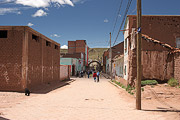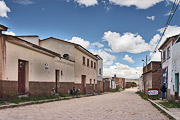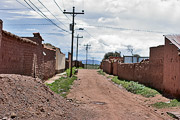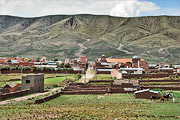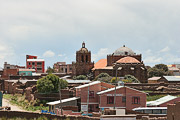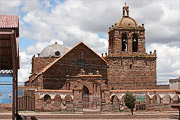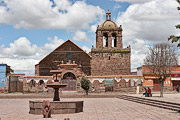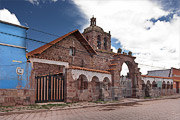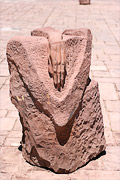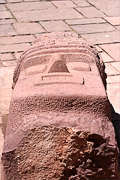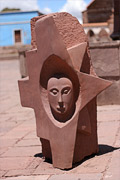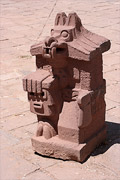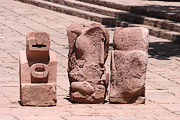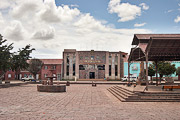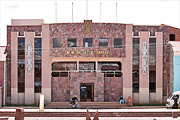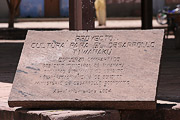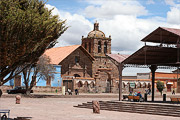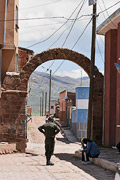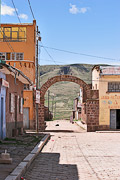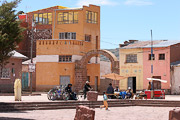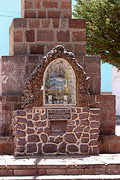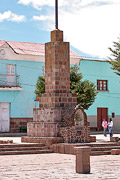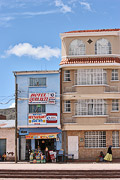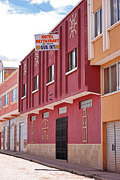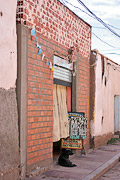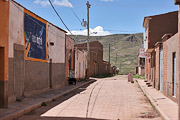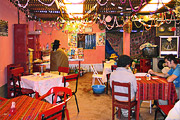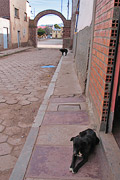Tiwanaku village
February 2008
Even 20 years ago in the Tiwanaku village (I don't have the heart to call it a town) prevailed structures built of adobe - «bricks» made of clay and reed. The increased flow of tourists and inflow of money helped to develop the «village economy».
The apparent poles of the village life is a catholic church, for construction of which they used «materials» of ancient cult ruins and a new building of municipality, haughtily rising on the other side of the square.
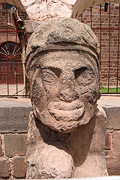
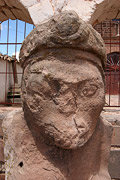

The square itself not long ago was made of earth, and goats, cows and other animals used to graze on the covered with grass lawns. The progress that came unexpectedly together with tourists is apparent: paved square, modern shed in its center to hold city meetings and concerts, and exposition of stone sculptures in the open air — as if the evidence that present Tiwanacotas work with stone not worse than their distant ancestors.
The municipality building is also decorated with stone and looks not less impressive than the Tiwanaku architectural complex itself. There is electricity in the village and water supply system, trade is being developed, but the issue of feeding the tourists is not very good. Sanitation and quality of cooking is suspicious, and normal toilets are not available at all.
Distinctive elements of decoration of the town are its arches. They use bright colours, thanks to which the structures look more lively and attractive.
Tiwanacotas are not obtrusive, prefer to meditatively sit aside and contemplate about the great past of the Tiwanaku civilization...
Virgen de Fatima
Hotel Quri Inti.

